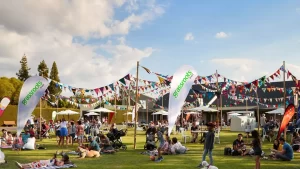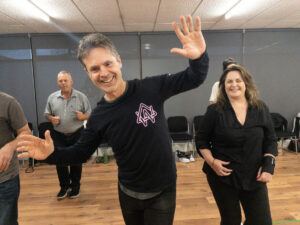Geneaologist captures family histories in earthquake-shattered Canterbury cemeteries
As much of Christchurch’s past lies in pieces, a Canterbury writer is in a race against time to preserve the valuable inscriptions on historic gravestones.
The Hunting Kiwis project will record and preserve photographs of all the rural cemeteries in Canterbury to ensure that information from headstones is available for future generations.
The website established to document the mammoth task undertaken by Darfield resident Helen Leggatt has already had thousands of hits and received donations from Canada and the USA.
Leggatt, a freelance writer, says the catalyst for the project was the 7.1 earthquake that shook much of her beloved rural Canterbury countryside last September. On visiting a local cemetery afterwards she saw for herself the extent of damage to many historic gravestones.
“I was horrified to see that many of the earlier graves, including some of the most elaborate plinths and obelisks, had been toppled, damaged or smashed.” After visiting other cemeteries in the area she realised the damage was extensive and in many cases, irreparable.
“At the time (Oct last year) Selwyn District Council told me that 800-1000 gravestones had been damaged, but I fear the number is higher.”
Following the Darfield-centred earthquake Selwyn District council staff checked each of their cemeteries for damage and found that 18 out of their 19 sites had incurred damage to the headstones.
Cemetery staff photograph and record any damage before they lay dangerous or loose headstones down on the grave. A Selwyn District Council spokesperson said it was the responsibility of the families of the deceased to repair the headstones.
At this stage there is no apparent damage to Selwyn district cemeteries from February’s 6.3 earthquake that caused so much destruction in Christchurch City.
The Hunting Kiwis project has already come to the aid of both local and international family historians. An elderly lady in Christchurch could not drive to Waddington cemetery but was able to get photos of her ancestors’ graves via the website.
A donation came from Rick Berry in Canada who was very pleased to find several of his ancestor’s’ headstones on the site.
Leggatt, a keen genealogist herself, admits she is fascinated by the lives of those that have gone before. “In the UK I ran a gravestone search and photography service and was once interviewed for BBC Radio 4 live from a rural Scottish cemetery at 5am one cold wintry morning!”
She bought her passion with her when she moved to New Zealand in 2004 and now helps family history researchers who are unable to visit this part of the world. “The advent of the internet meant I could help others find the gravestones of their ancestors.”
Stewart Harvey, chairman of the Historic Cemeteries Conservation Trust of New Zealand said the organisation, established in 2002 had the principal aim of identifying and preserving New Zealand’s historic cemeteries as an essential element of the nation’s cultural heritage.
“Monumental inscriptions are of such great value to genealogists that their transcription has been seen as urgent in view of their gradual disappearance through age and neglect.”
With cemeteries spread across remote Canterbury there is much work to do and at this stage Leggatt has only completed photographing five sites. Many of the beautiful old headstones belong to some of Canterbury’s earliest settlers and on her travels she has found interesting references to the pioneering spirit of the deceased.
At Kowhai Pass Cemetery, Springfield a stone is inscribed: RODGERS, Cornelius Henry Valentine (d. 12th April, 1941) “He journeyed to Mt Torlesse as a baby in a bullock dray.”
At Cust Anglican Cemetery the land was originally given to the St James Parish in 1870 by a John Murphy of local property Tara. He was the first person to be buried in the cemetery in 1872.
The Hunting Kiwis project can be followed at www.genealogyjourno.wordpress.com
It receives no funding and any donations received are given to rural Canterbury churches and cemeteries that have been damaged in the quakes.




